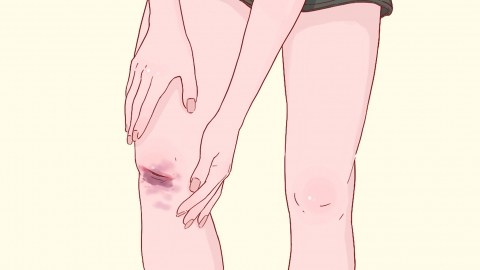What causes tightness and pulling sensation in an episiotomy wound, and what should be done about it?
Generally, a feeling of tightness and pulling at the episiotomy site may be caused by scar formation during wound healing, improper postpartum activity, local tissue adhesion, wound infection, or poor absorption of sutures. It is recommended to seek medical attention promptly, identify the underlying cause, and follow symptomatic treatments under a doctor's guidance. Specific causes are analyzed as follows:

1. Scar formation during wound healing: During healing, fibrous tissue proliferation leads to scar formation, causing tightness and a pulling sensation in the local skin. Sit in warm water baths 1–2 times daily to promote local blood circulation. Apply silicone gel, mucopolysaccharide polysulfate cream, or madecassol ointment as directed by a physician to soften scars and relieve discomfort.
2. Improper postpartum activity: Engaging in intense physical activity too early or adopting incorrect postures can strain the wound before it has fully healed. Avoid deep squats and prolonged sitting after childbirth. Move slowly when getting up or turning over, and wear loose, breathable cotton underwear to reduce friction on the wound.
3. Local tissue adhesion: During wound healing, the skin may adhere to subcutaneous tissues, resulting in pulling pain during movement. Under medical supervision, perform gentle pelvic floor muscle rehabilitation exercises and combine with local massage to gradually release adhered tissues.
4. Wound infection: Poor wound care may lead to infection, with inflammation causing redness, swelling, and tightness. Disinfect the wound daily with iodophor, keep it clean and dry, and take antibiotics such as cefuroxime axetil tablets, amoxicillin capsules, or metronidazole tablets as prescribed to control infection.
5. Poor suture absorption: Absorbable sutures that fail to be fully absorbed can irritate local tissues, causing tightness and a foreign body sensation. Seek timely medical evaluation; if sutures remain unabsorbed for a long time, they should be removed by a healthcare provider. After removal, sit in potassium permanganate solution baths to prevent infection.
Maintain a light and nutritious diet, consume more foods rich in protein and vitamins to support wound healing. Avoid spicy and irritating foods, maintain regular bowel movements, and avoid excessive straining during defecation, which could pull on the wound. Attend regular follow-up appointments to ensure proper wound recovery.




